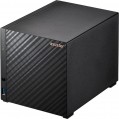Add to comparison |  |  |
|---|---|---|
| ASUSTOR Drivestor 4 RAM 1 GB | ASUSTOR Drivestor 2 RAM 1 GB | |
| Compare prices 3 | from $179.00 | |
| TOP sellers | ||
| Mount | desktop | desktop |
Drives | ||
| 3.5" drive slots | 4 | 2 |
| SATA 2 | ||
| SATA 3 | ||
| RAID | RAID 0 RAID 1 JBOD Single | RAID 0 RAID 1 JBOD Single |
Connection | ||
| LAN ports | 1 | 1 |
| LAN speed | 2.5 Gbps | 2.5 Gbps |
| USB 3.2 gen1 | 2 | 2 |
Features | ||
| Software features | FTP server multimedia (DLNA, iTunes, uPnP) transcoding BitTorrent client video surveillance server backup DDNS domain integration | FTP server multimedia (DLNA, iTunes, uPnP) transcoding BitTorrent client video surveillance server backup DDNS domain integration |
Hardware | ||
| Operating system | ADM 4.0 | ADM 4.0 |
| CPU | Realtek RTD1296 | Realtek RTD1296 |
| CPU cores | 4 cores (4 threads) | 4 cores (4 threads) |
| CPU speed | 1.4 GHz | 1.4 GHz |
| RAM | 1 GB | 1 GB |
| Built-in memory | 8192 MB | 8192 MB |
| Control | WEB-interface / app | WEB-interface / app |
General | ||
| Power consumption | 22.8 W | 11.6 W |
| Cooling | active | active |
| Noise level | 18.6 dB | |
| Size | 165x164x218 mm | 165x102x218 mm |
| Weight | 1.57 kg | 1.14 kg |
| Added to E-Catalog | september 2021 | september 2021 |